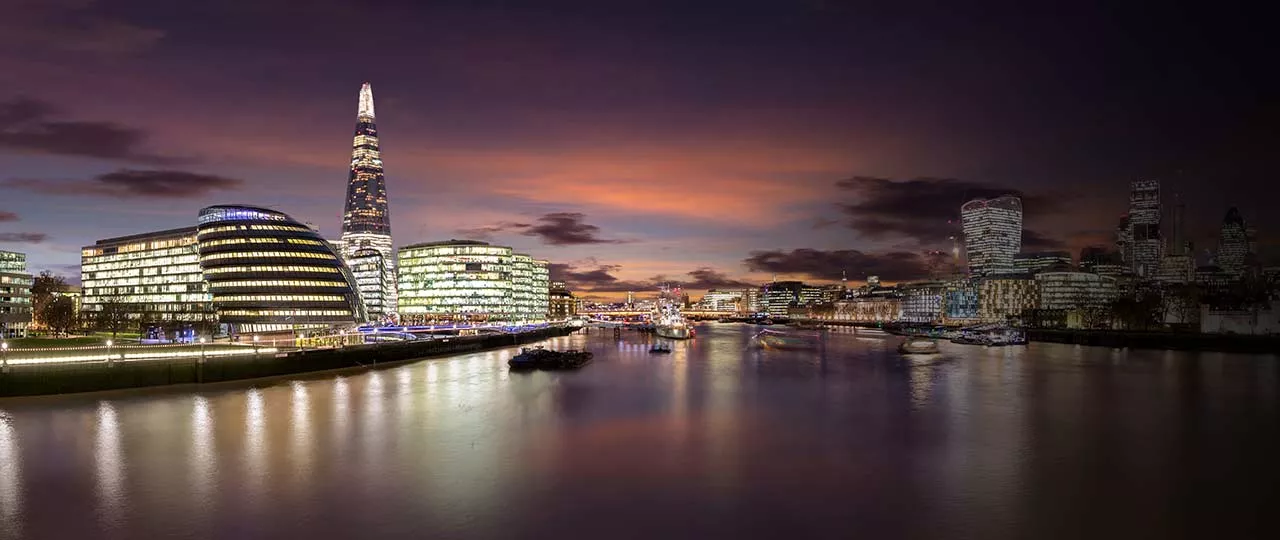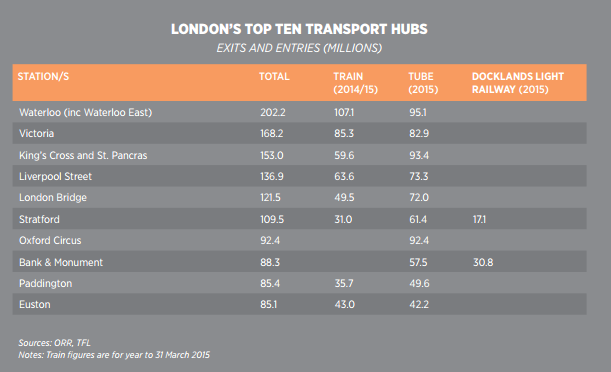
For many years London had two dominant business districts: the City of London and the West End, both located in the heart of the city. At the same time, London’s major railway stations, such as King’s Cross and Waterloo, were little more than places for commuters to interchange as they made their way into the centre of the city.
For many years London had two dominant business districts: the City of London and the West End, both located in the heart of the city. At the same time, London’s major railway stations, such as King’s Cross and Waterloo, were little more than places for commuters to interchange as they made their way into the centre of the city.
London’s meteoric growth in population and employment in recent decades has, however, driven a significant structural change in its business geography. This trend is accelerated by significant investment in the city’s transport system, exemplified by the improved transport infrastructure in places such as Stratford, in East London, (the site of the 2012 Olympics) and the revamped stations at King’s Cross and St. Pancras (home to the Eurostar terminus and High Speed 1).
As London’s employment has grown sharply, alongside office rents, businesses have increasingly sought viable accommodation outside of core areas. Fortunately for them, the redevelopment of many of London’s main transport hubs, as well as the surrounding hinterland, has provided a rich source of competition to London’s more traditional business districts. Moreover, office tenants have become ever-more focused on the public transport accessibility of their locations, often at the expense of remaining in their traditional business areas. For example, the global media giant Havas chose King’s Cross as the site to consolidate its 24 UK agencies under one roof, as opposed to traditional areas for media occupiers, such as Soho in the West End.
In the table below we have laid out London’s major transport hubs based on 2015 figures for passenger entries and exits, for tube, rail and the Docklands Light Railway.

It is notable that London’s five busiest stations all stand on the periphery of the capital’s traditional business areas, yet all five are emerging, or are set to emerge, as major business districts in their own right.
Waterloo, although the largest of London’s transport hubs, is relatively underdeveloped from a business perspective. However, it is now seeing substantial office, retail and residential development around the station, as investors seek to capitalise on its status as a major transport interchange and its proximity to the South Bank: a significant cultural quarter and major tourist attraction.
Victoria, London’s second largest station, is located to the south west of the West End, and in close proximity to Westminster. Traditionally, the wider area has been known as a home to UK Government departments. Recent years, though, have seen substantial office, residential and retail development carried out by the area’s major landlord, Land Securities. The opening of a new food quarter containing 17 new restaurants and three pop-up kiosks exemplifies the area’s transformation into a prime business, leisure and residential district.
The formerly mentioned King’s Cross and St. Pancras stations, are now part of an area which has established itself as a major office and leisure district, where office rents of £80 per sq ft. are some of the highest in London. The area serves as Google’s UK HQ, as well as being home to the world famous arts college Central Saint Martins.
Similarly, London Bridge, the home of The Shard – London’s tallest building, which completed in 2012 – has seen major commercial development prior to the completion of substantial works on the train station itself. Although now well-established as a competitive office market, the station upgrade (finishing in 2018) is set to complete the area’s regeneration; a point at which we believe it will emerge as one of London’s more expensive office locations.
Further afield, Stratford is also emerging as a competitive office location for occupiers seeking good value space with excellent transport links. The wider area has been transformed on the back of the 2012 Olympics; it boasts first class retail and leisure facilities, as well as substantial residential developments such as the East Village (formerly the Athletes’ Village). The Financial Conduct Authority and Transport for London are both relocating to the area, and it will get a further boost thanks to its status as one of Crossrail’s major interchange stations.
Speaking of Crossrail, this East-West line through central London is set to improve the transport connectivity, and overall prospects of a number of other locations. The new line is expected to bring an additional 1.5 million people to within 45 minutes of the centre of London, reducing journey times between key transport nodes, and further encouraging polycentricism in London’s business demography. Limited services start this year, with the whole line expected to be operational by December 2019.
Canary Wharf, for example, is set to benefit greatly from the additional connectivity provided by Crossrail on top of the existing Jubilee Line and Docklands Light Railway links. Traditionally primarily an office district, with limited retail and leisure facilities, and residential accommodation, it is now seeing a wider mix of development take place. Notably Crossrail Place, a five-storey mixed-use development, which sits above the new Crossrail station, and offers employees and residents a much expanded range of food, drink and leisure options. Construction is also underway on a new mixed-use phase on the east side of the district.
Crossrail is, however, also shifting London’s more central office districts around. The new connections in Tottenham Court Road, Farringdon and Liverpool Street have made the locations far more attractive to tenants, and consequently investors. Farringdon and Liverpool Street, traditionally considered to be located on the City of London’s fringe, are now increasingly finding themselves at the centre of things, given the shift in transport infrastructure in their favour.
On the west side of London, Paddington is one of London’s busiest stations – with a fast train line to Heathrow Airport, and notable office developments such Paddington Basin and Paddington Central in the station’s vicinity. Looking to the future, its Crossrail connection, the redevelopment of the station, and new schemes in the area such as the office-led Paddington Cube development, should ensure the area remains competitive even within London’s myriad landscape of business clusters.
Finally, looking further into the future, Old Oak Common in west London is set to be the site of a significant transport interchange between Crossrail and the new High Speed 2 rail line. The Old Oak and Park Royal Development Corporation (OPDC) has been formed as the Local Planning Authority and regeneration agency for the 650 hectare site, and is seeking to drive the development of a major commercial and residential district on the back of the enhanced transport links, which are expected to be operational by 2026.
